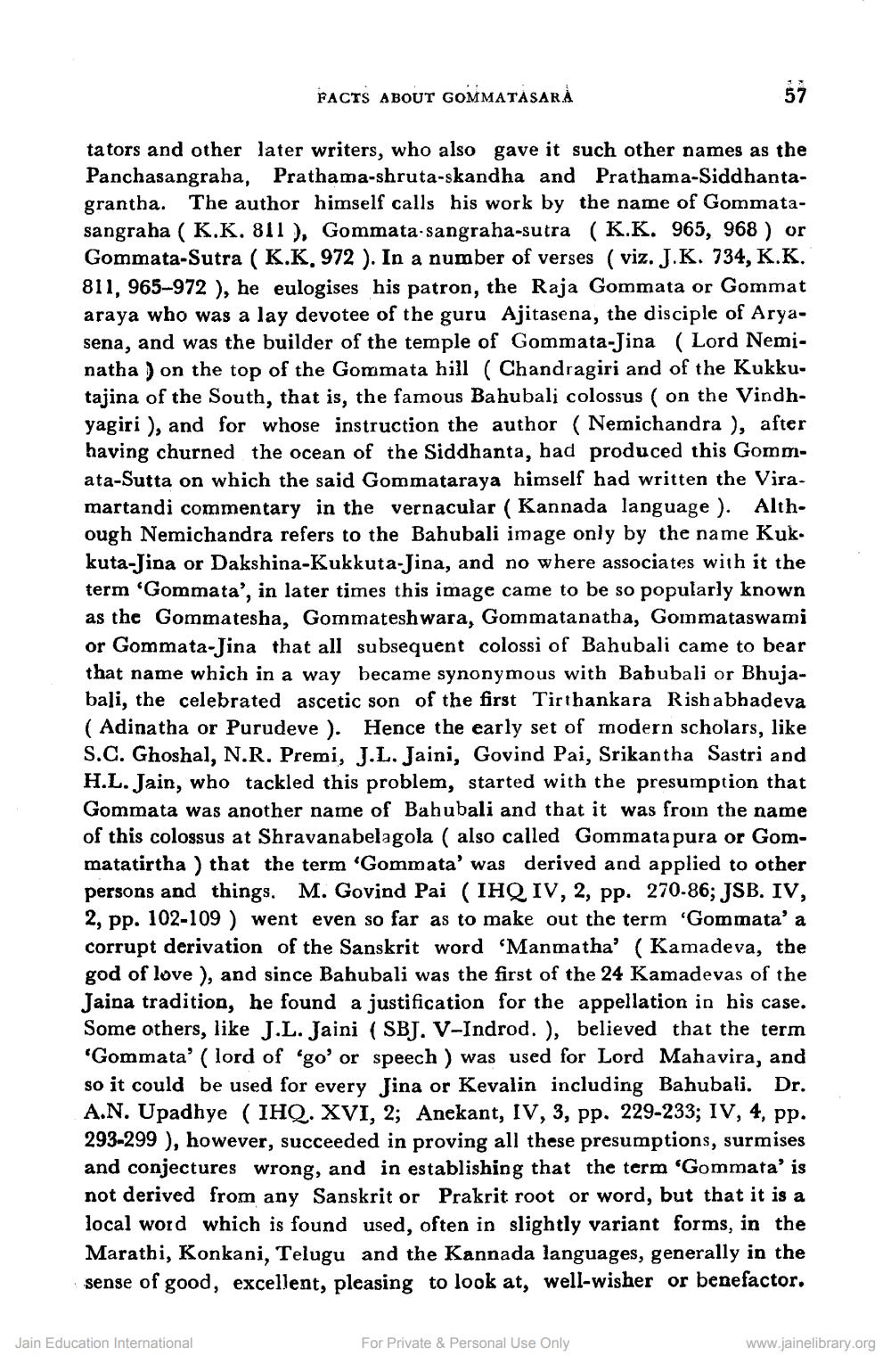________________
PACTS ABOUT GOMMATASARÀ
tators and other later writers, who also gave it such other names as the Panchasangraha, Prathama-shruta-skandha and Prathama-Siddhantagrantha. The author himself calls his work by the name of Gommatasangraha (K.K. 811), Gommata-sangraha-sutra (K.K. 965, 968 ) or Gommata-Sutra (K.K. 972 ). In a number of verses (viz. J.K. 734, K.K. 811, 965-972 ), he eulogises his patron, the Raja Gommata or Gommat araya who was a lay devotee of the guru Ajitasena, the disciple of Aryasena, and was the builder of the temple of Gommata-Jina (Lord Neminatha) on the top of the Gommata hill ( Chandragiri and of the Kukkutajina of the South, that is, the famous Bahubali colossus ( on the Vindhyagiri ), and for whose instruction the author (Nemichandra ), after having churned the ocean of the Siddhanta, had produced this Gommata-Sutta on which the said Gommataraya himself had written the Viramartandi commentary in the vernacular (Kannada language ). Although Nemichandra refers to the Bahubali image only by the name Kuk. kuta-Jina or Dakshina-Kukkuta-Jina, and no where associates with it the term 'Gommata', in later times this image came to be so popularly known as the Gommatesha, Gommateshwara, Gommatanatha, Gommataswami or Gommata-Jina that all subsequent colossi of Bahubali came to bear that name which in a way became synonymous with Babubali or Bhujabali, the celebrated ascetic son of the first Tirthankara Rishabhadeva (Adinatha or Purudeve ). Hence the early set of modern scholars, like S.C. Ghoshal, N.R. Premi, J.L. Jaini, Govind Pai, Srikantha Sastri and H.L. Jain, who tackled this problem, started with the presumption that Gommata was another name of Bahubali and that it was froin the name of this colossus at Shravanabelagola (also called Gommata pura or Gommatatirtha) that the term 'Gommata' was derived and applied to other persons and things. M. Govind Pai (IHQ IV, 2, pp. 270-86; JSB. IV, 2, pp. 102-109 ) went even so far as to make out the term 'Gommata' a corrupt derivation of the Sanskrit word 'Manmatha' (Kamadeva, the god of love ), and since Bahubali was the first of the 24 Kamadevas of the Jaina tradition, he found a justification for the appellation in his case. Some others, like J.L. Jaini (SBJ. V-Indrod. ), believed that the term 'Gommata' ( lord of 'go' or speech ) was used for Lord Mahavira, and so it could be used for every Jina or Kevalin including Bahubali. Dr. A.N. Upadhye (IHQ. XVI, 2; Anekant, IV, 3, pp. 229-233; IV, 4, pp. 293-299 ), however, succeeded in proving all these presumptions, surmises and conjectures wrong, and in establishing that the term 'Gommata' is not derived from any Sanskrit or Prakrit root or word, but that it is a local word which is found used, often in slightly variant forms, in the Marathi, Konkani, Telugu and the Kannada languages, generally in the sense of good, excellent, pleasing to look at, well-wisher or benefactor.
Jain Education International
For Private & Personal Use Only
www.jainelibrary.org




